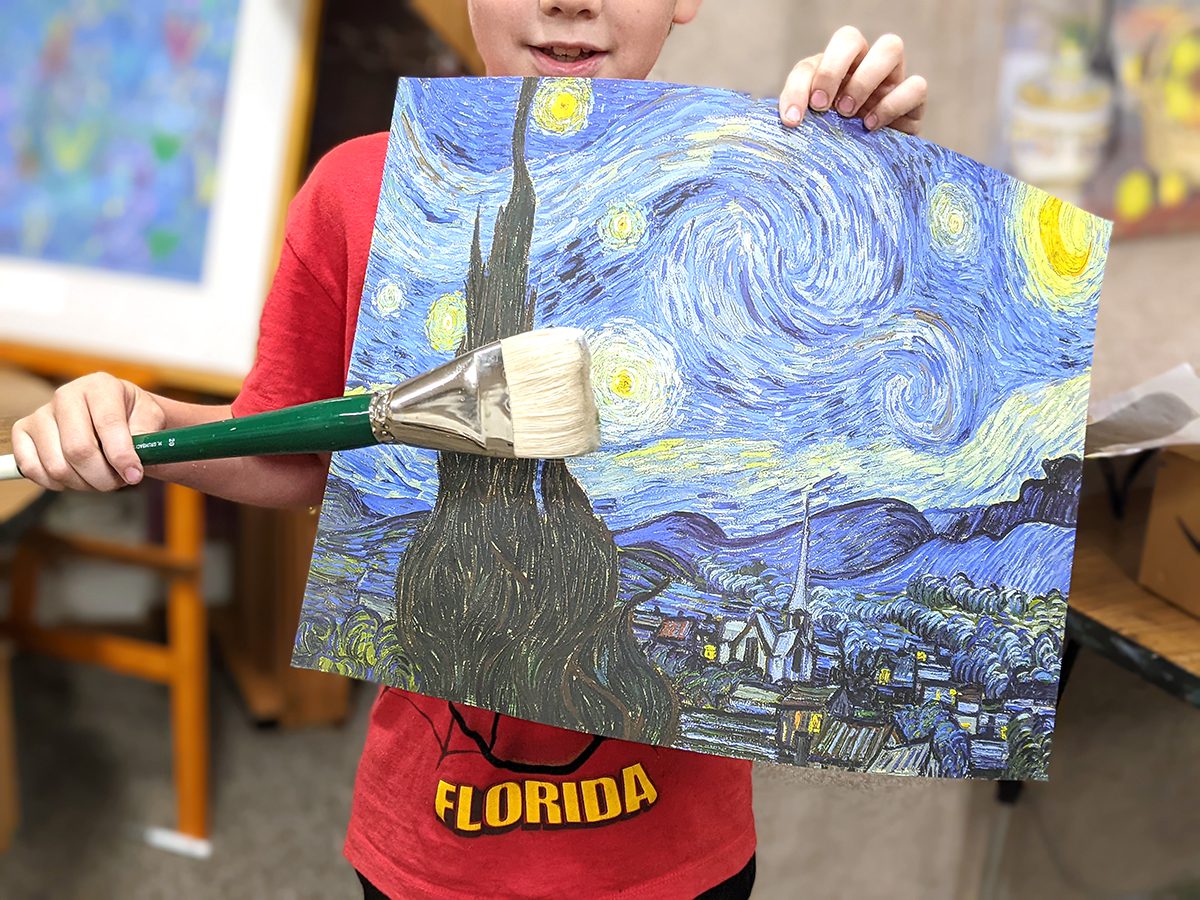Sitting at a desk all day listening to lectures sounds draining, tedious, and boring. As a matter of fact, classes with predominately lecture-style instruction have been proven to be ineffective. It can be challenging to deliver lessons packed with both information and hands-on engagement. One way to make learning more interactive is to bring the visual and performing arts together with theater techniques!
Theater can reinforce skills like collaboration, negotiation, and compromise as students rehearse and perform together. The performing arts can boost students’ confidence and teach them how to be encouraging and give and receive constructive feedback to and from their peers. Furthermore, theater activities can fully engage students’ physical bodies. Kinesthetic movement in learning has been shown to increase students’ ability to retain information. If you are fortunate enough to have a theater teacher at your school, consider partnering with them to work on a project together.
Keep reading for three ways to incorporate theater techniques in the art room to make learning more interactive!
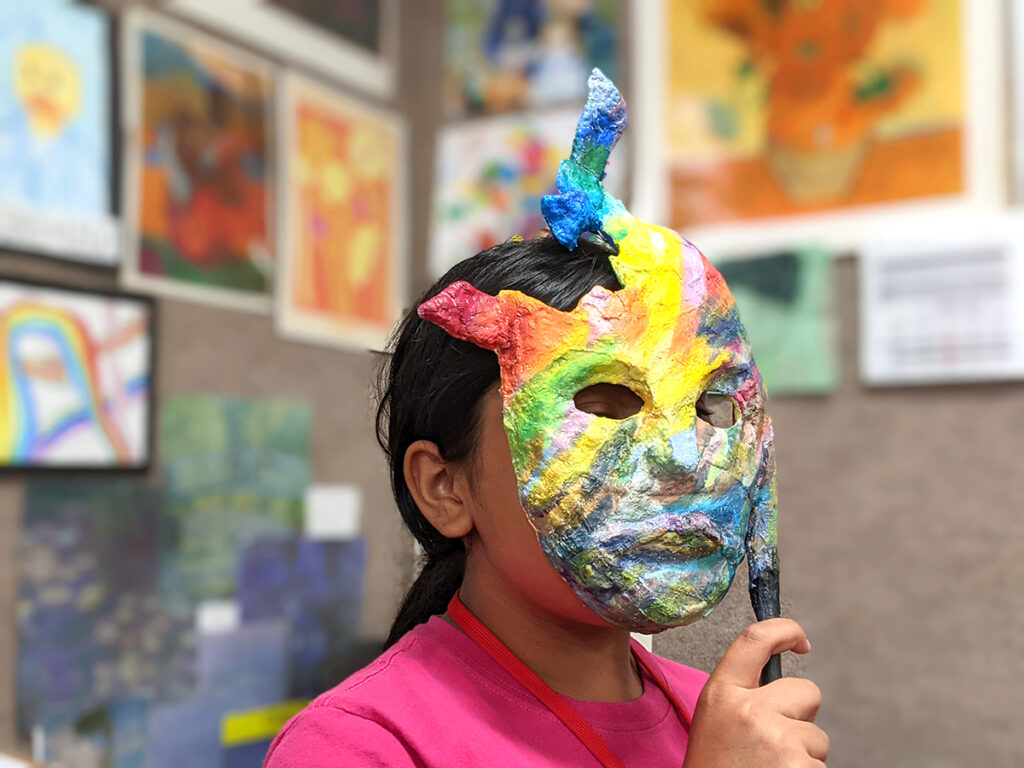
Some students may feel uncomfortable standing in front of the class or have a physical learning barrier. While the end goal is to ensure all students can participate in meeting the lesson’s objectives, be flexible with how students get there. Students can choose a partner or small group to work with instead of being alone. They can share from their desk area instead of moving around or standing in front of the room. Be conscious of your student’s needs and provide options proactively so that all students feel comfortable and safe.
1. Pose for a figure drawing.
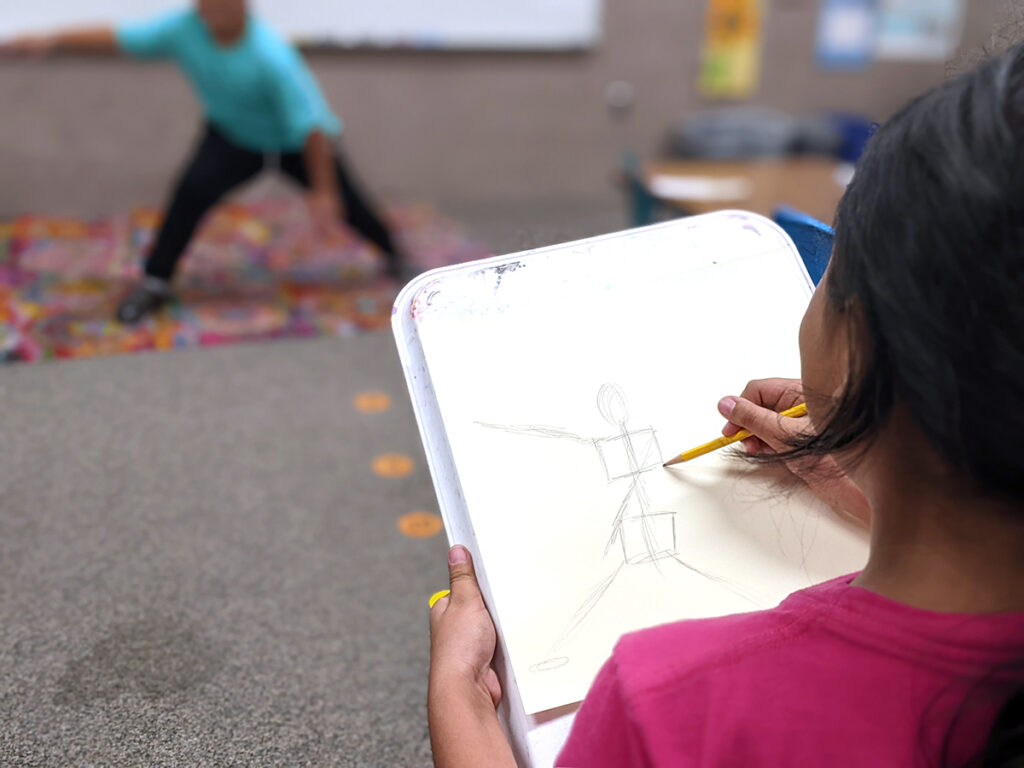
This activity incorporates theater techniques with figure drawing. Students move their bodies and practice drawing the human figure. Introduce your students to figure drawing and model an example of a simple gesture drawing. Gesture drawings help students “let loose” and enjoy the process of drawing instead of focusing on the final product. Students can stand at their chairs or move desks to have more space to pose for drawings. Provide charade prompts for students to act out. If they are comfortable, strike an exaggerated pose!
If you are looking to gain confidence in teaching figure drawing, check out the Pack, Drawing the Human Form in PRO Learning. Learn about proportions, features, gesture drawing, and how to put it all together in a final art piece with short tutorial videos and teacher-facing resources. Many districts and schools cover the price of PRO for their art teachers. Connect today to explore what else PRO has to offer with this quick contact form.
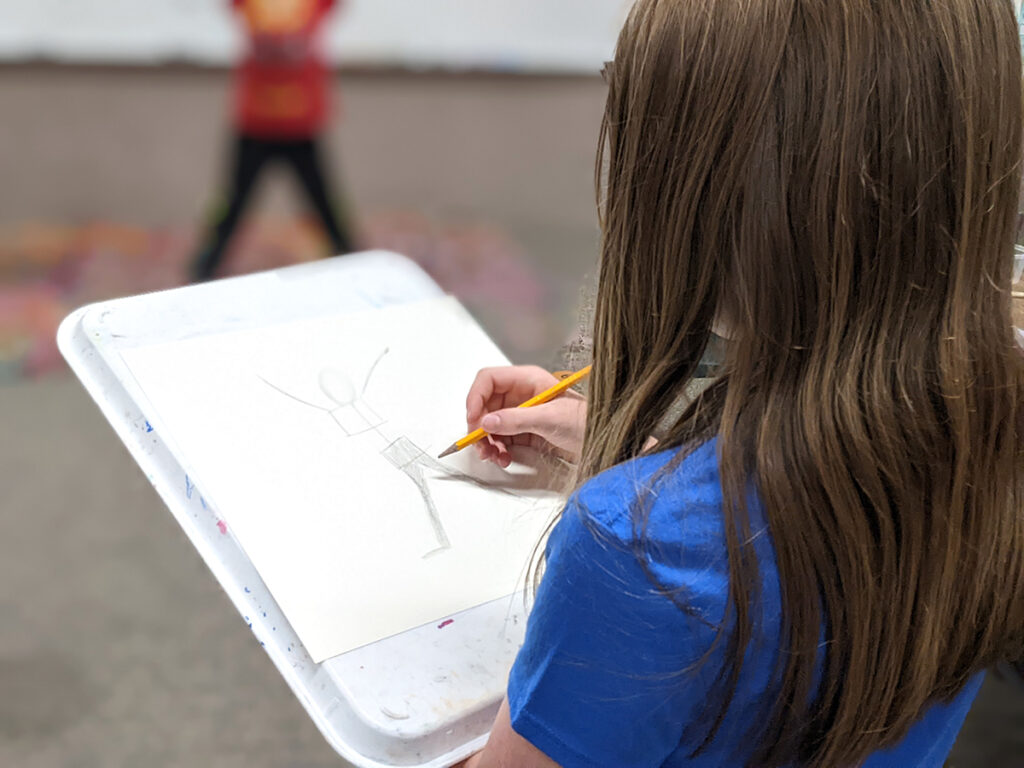
2. Deliver an artist monologue.
Students demonstrate knowledge of a chosen artist by performing a monologue. This role-playing activity can improve public speaking skills, foster empathy for others, and skyrocket imaginative thinking. Students can perform their short speech about an influential artist in the first person or as a biographical narration.
Their monologue can include important facts about the artist, such as:
- Where and when was this person born?
- Where did they live as an adult?
- What new ideas, art pieces, and events did they contribute to art history?
- What is the name of a famous piece they created?
- Why did they create art, and/or what was their body of work about?
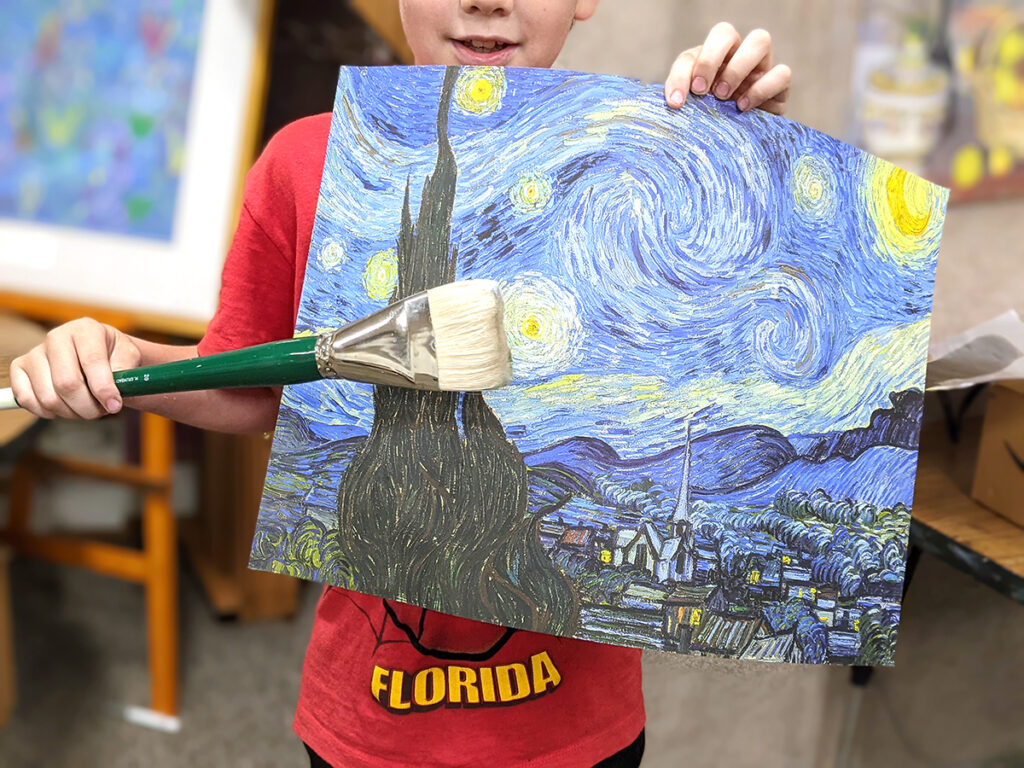
Encourage students to use their bodies to convey the character of their artist. They can play with body language, such as posture, hand gestures, and facial expressions. They can even dress up or use props! For example, a student acting as Jackson Pollock can bend over the floor to splatter paint when talking about his painting methods.
While teaching strong research skills is valuable, sometimes there just isn’t enough time! Take advantage of the hundreds of student-facing artist bios found in FLEX Curriculum. You can explore them all here. Each artist’s bio includes short blurbs about the artist’s history, work, and achievements. Provide accurate information about artists with APA citations to your students with just a click. For more information on how to get these artist bios for your students, fill out this quick contact form.
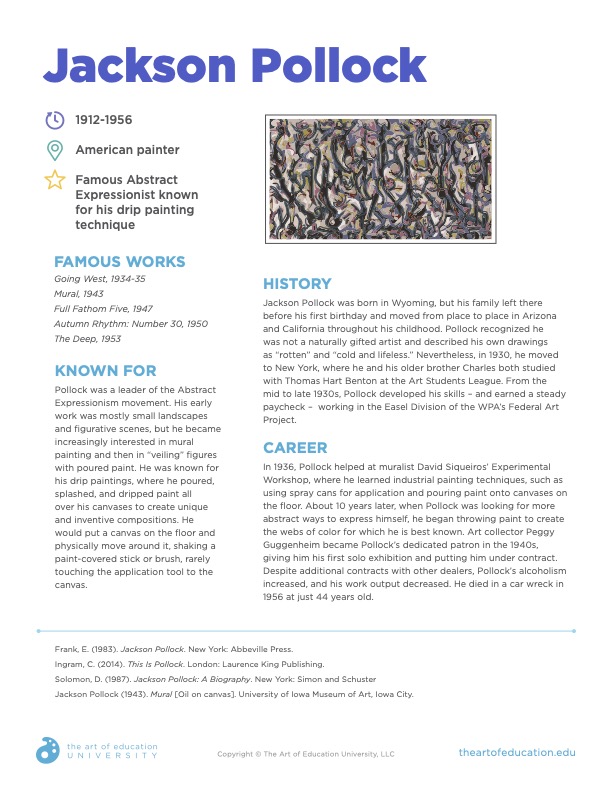
3. Design a puppet.
Creating puppets in the art room is fun for all grade levels. By using puppets in the art room, students can practice narrative voice, problem-solving, and storytelling. This activity also encourages students to work and act as a community. Set out supplies for creating paper bag puppets. Include coloring tools, paper, glue, scissors, and miscellaneous craft items. Students create their puppets with paper bags as the base.
For more advanced students, introduce basic hand-sewing techniques with the Bringing Hand Sewing into the Art Room Pack in PRO Learning. To see how Andrea Lee-Tam, a middle school art teacher in Hawaii, collaborates with the theater teacher to teach her puppetry unit, watch her DITL episode below.
When the puppet construction is finished, allow time for students to work in small groups to write a short play starring their puppets. Introduce the terms “characters,” “plot,” “sequence,” and “conclusion.” Students work together to brainstorm, plan, write, rehearse, and perform their show. Extend this project even further, and incorporate set design to create backdrops.
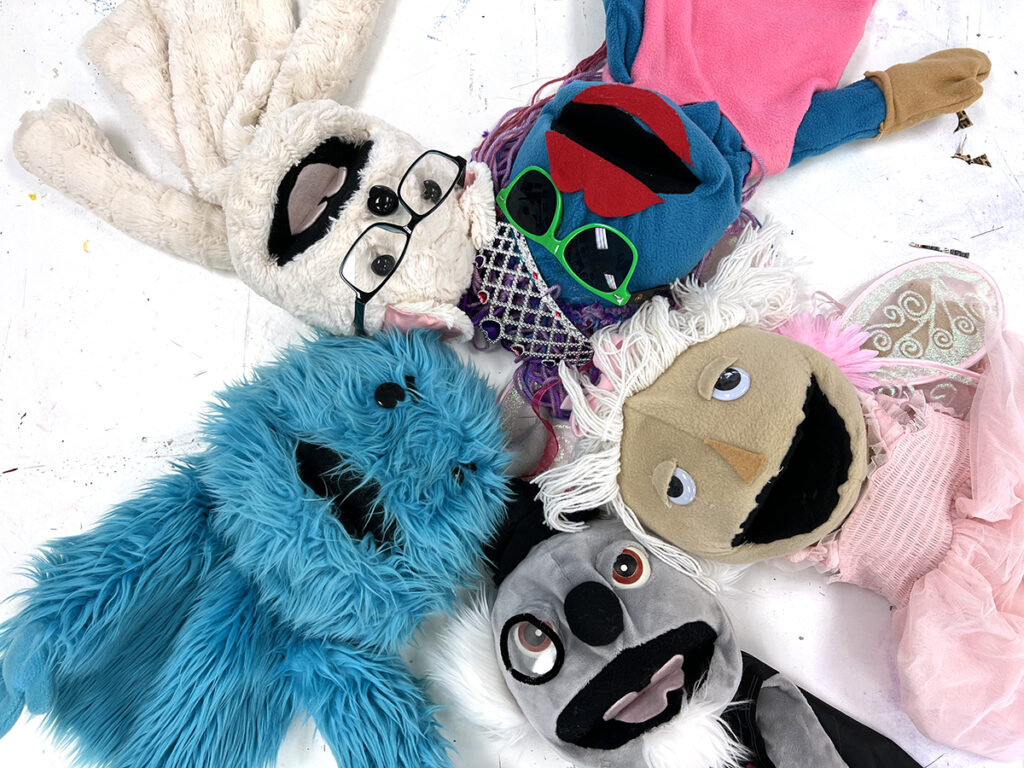
Use theater techniques in the art room to grab your students’ attention and get them excited to learn! While the visual arts already incorporate movement and interaction to benefit student learning, adding a performing arts layer can deepen the experience. It also shows your students that the arts can be integrated together seamlessly. Posing for a figure drawing, delivering an artist monologue, or designing puppets can hook your students and reinforce valuable concepts and skills. Why wait? “Get the show on the road,” and try one of these ideas out this year!
How do you already incorporate theater into your art room?
What upcoming art lessons can you adapt to include theater techniques?
Magazine articles and podcasts are opinions of professional education contributors and do not necessarily represent the position of the Art of Education University (AOEU) or its academic offerings. Contributors use terms in the way they are most often talked about in the scope of their educational experiences.
